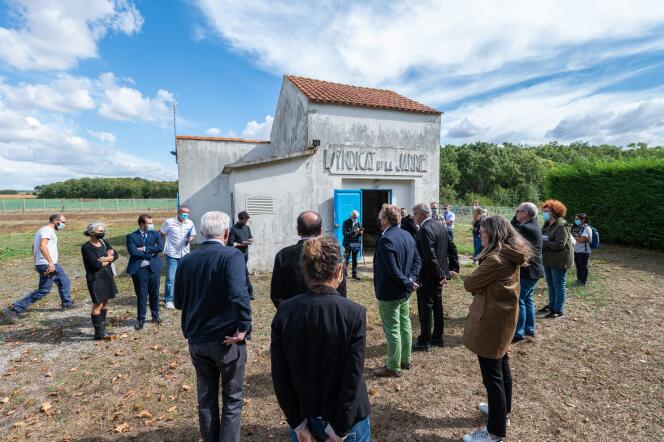The approximately 179,000 inhabitants of the La Rochelle area will not see the difference when they open their tap. But the water that will come out, between now and the end of October, will not be the same as usual. The urban community (CDA) of La Rochelle, which produces and distributes drinking water in the twenty-eight municipalities in its territory, announced, Wednesday October 18, its decision to ” disconnect ” the fifteen underground boreholes located in the Aunis plain (north of Charente-Maritime), after the discovery of a degradation product of a fungicide banned since 2020: chlorothalonil.
The presence of this metabolite, called chlorothalonil R471811, was revealed following a series of analyzes carried out at the request of the National Agency for Food, Environmental and Occupational Health Safety (ANSES ). In a report published in April 2023, concluding a national measurement campaign launched in 2019 to detect the presence of nearly two hundred unidentified emerging molecules (pesticides, drugs, personal care products, etc.), the agency indicates that the chlorothalonil R471811 is “found very frequently” in water boreholes in France.
In La Rochelle, analyzes of drinking water in July and August showed the presence of the metabolite in the raw water coming from catchments, shallow and therefore more exposed to surface pollution, but also in that which is supplied by the Coulonge factory, on the Charente river, the main source of supply (60% ) of the urban area.
“Tap water remains drinkable”assures Jean-François Fountaine, various left-wing mayor and president of the CDA of La Rochelle, who is obliged to “an absolute rule” transparency on the subject. The chosen one relies on the concentration thresholds noted. In raw water (before treatment), the concentrations vary between 0.11 and 0.35 micrograms per liter in the water of the Charente, and between 1.4 and 2.9 micrograms per liter in the catchments of the Aunis. The regional health agency (ARS) prohibits the distribution of drinking water from 3 micrograms per liter to the tap.
“Severely degraded” water
“This threshold has never been exceededindicates Guillaume Krabal, vice-president of the CDA responsible for water. There is currently no proven risk according to the terms of ANSES and the ARS. » Water, however, is judged “strongly degraded” in the catchments, which led to their temporary closure, due to the fact that there is currently no treatment to remove chlorothalonil R471811. Charente water will be the only one distributed to Rochelais for a few months.
You have 50.2% of this article left to read. The rest is reserved for subscribers.
